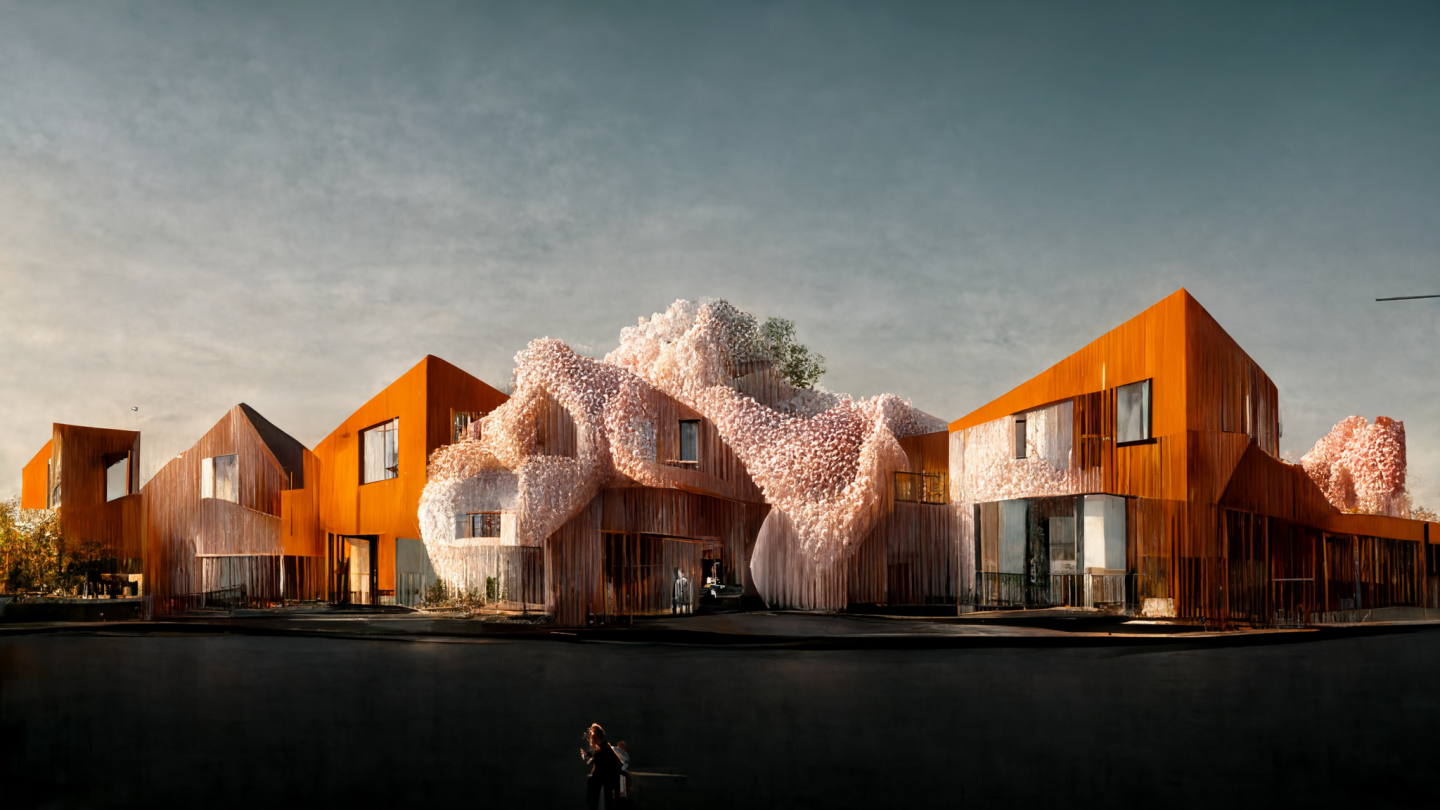From Text to Image
Kory Bieg

Text-to-Image Artificial Intelligence (AI) has taken the creative world by storm. In this lecture, Kory Bieg will discuss the value of using Text-to-Image AI in the design process and how current technologies fit within a long evolution of computational design tools. Bieg will show different uses of AI in his own work and how it can be a creative engine for speculative design proposals. The lecture will cover topics that AI has brought to the forefront, including issues of authorship, what it means to lose control, why we should embrace complexity, and whether we are about to see a new vernacular emerge.
Kory Bieg is an associate professor and program director for architecture at The University of Texas at Austin. He received his Master of Architecture from Columbia University, is NCARB certified, and a registered architect in Texas. Since 2013, he has served as Chair of the TxA Emerging Design + Technology conference, and co-Director of TEX-FAB Digital Fabrication Alliance. He has served on the Board of SXSW Eco Place by Design and the Association for Computer Aided Design in Architecture (ACADIA). In 2019, Bieg co-chaired the annual ACADIA conference titled “Ubiquity and Autonomy.”
In 2005, Kory Bieg founded OTA+, an architecture, design, and research office that specializes in the development and use of current, new, and emerging digital technologies for the design and fabrication of buildings, building components, and experimental installations. OTA+ uses current design software and CNC machine tools to both generate and construct conceptually rigorous and formally unique design proposals.
The Berlage Sessions, a seven-part seminar series entitled “Architecture’s Transpositions,” examines the mediatic disciplinary transfers, from sixteenth-century abstracted geometries to twenty-first-century augmented realities. Topics will include the digitization of maps, the creation of digital replicas of landscapes, the modelling of multisensory extended reality experiences, the framing and photographing of buildings, and the imagined histories of architectural drawings and models.